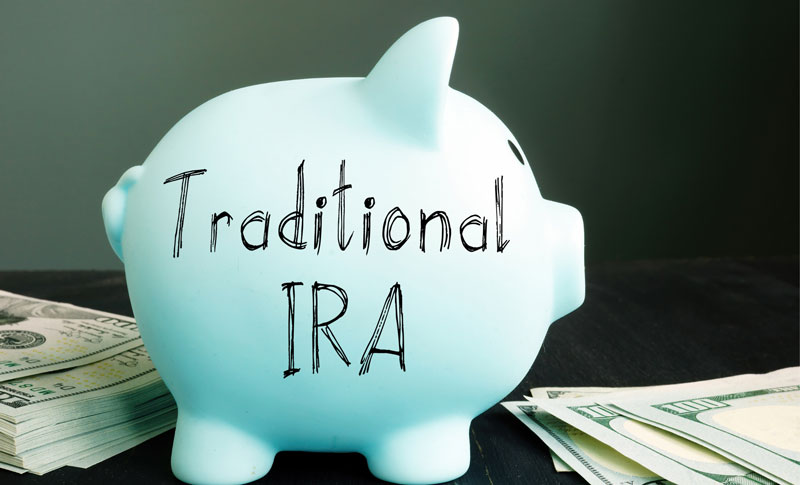Advertisement
SIMPLE IRA Vs. Traditional IRA: What’s the Difference?
Oct 27, 2024 By Kelly Walker
There are many types of IRAs, but two popular options that stand out are the SIMPLE IRA and Traditional IRA. Understanding the differences between these two retirement accounts is essential to ensure you can choose the right one to suit your needs. Individual Retirement Accounts (IRAs) provide a tax-advantaged way for individuals to plan and reserve for retirement. While SIMPLE IRA is a type of IRA that a small business owner opens and supports for its workers.
This article offers an in-depth comparison of the SIMPLE IRA and Traditional IRA, providing you with the information to make a wise decision for your retirement savings strategy.
What is a SIMPLE IRA?
A Savings Incentive Match Plan for Employees (SIMPLE) allows employers to set up an individual retirement account plan that matches employee contributions. It is designed for businesses with 100 or fewer employees and offers an easy way to set up a retirement savings plan. In 2022, employees can contribute up to $14,000 and $15,500 in 2023. Moreover, employers must match the employee contribution at either 3% of their salary or 2% of their salary, whichever is higher.

What is a Traditional IRA?
A Traditional IRA is a retirement savings account that allows individuals to save money in a tax-advantaged way. Usually, contributions made to a Traditional IRA are eligible for tax deductions, and any investment gains within the account can grow tax-deferred until the funds are eventually withdrawn. Individuals can contribute up to $6,000 in 20222, or $7,000 if they are over 50, while $6,500 in 2023 and $7,500 for over 50. Withdrawals taken from a Traditional IRA before age 59½ are subject to ordinary income tax and a 10% early withdrawal penalty.

Differences between SIMPLE IRA and Traditional IRA
Let's have a detailed look at the main differences between SIMPLE IRA and Traditional IRA so you can clearly understand these plans. It will help you in choosing the right plan for you.
1. Structure and Eligibility
The first notable difference between a SIMPLE IRA and a Traditional IRA lies in their structure and eligibility criteria. An individual set up a Traditional IRA, while a SIMPLE IRA is established by an employer for its employees. As an employee, you are eligible to participate in a SIMPLE IRA if your employer offers this retirement plan. At the same time, any individual can open and contribute to a Traditional IRA.
2. Contribution Limits
Both the SIMPLE IRA and Traditional IRA have contribution limits, but the limits differ. For the tax year 2023, the maximum annual contribution for a SIMPLE IRA is $15,500, with a catch-up contribution of an additional $3,500 for individuals aged 50 or older. In contrast, the maximum annual contribution for a Traditional IRA is $6,500 in 2023, with a catch-up contribution of an additional $1,000 for individuals aged 50 or older.
3. Employer Contributions
One significant advantage of a SIMPLE IRA is the mandatory employer contributions. Employers who offer a SIMPLE IRA must contribute either a matching contribution or a non-elective contribution on behalf of eligible employees. The matching donation is based on the employee's salary deferral contributions, typically up to 3% of their compensation. In contrast, Traditional IRAs do not involve employer contributions.
4. Employee Contributions
In a SIMPLE IRA, employees can contribute a portion of their income through salary deferrals. These contributions are made pre-tax, reducing taxable income for the year. Individuals can make tax-deductible contributions with a Traditional IRA, subject to certain income limitations. Both types of contributions grow tax-deferred until withdrawal.
5. Withdrawals and Tax Treatment
Withdrawals from a SIMPLE IRA and a Traditional IRA are subject to different rules and tax treatments. In a SIMPLE IRA, withdrawals made before the age of 59½ and within the first two years of participation are subject to a 25% early withdrawal penalty. After two years, the penalty increases to 10%. Withdrawals from a Traditional IRA before age 59½ are generally subject to a 10% early withdrawal penalty unless certain exceptions apply.
6. Required Minimum Distributions (RMDs)
The SIMPLE IRA and Traditional IRA require individuals to take required minimum distributions (RMDs) starting at age 72. RMDs from a SIMPLE IRA are subject to ordinary income tax. In a Traditional IRA, RMDs are also subject to regular income tax, and failure to take the required distributions may result in a hefty penalty.
7. Administrative Responsibilities
While both types of IRAs offer tax advantages, the administrative responsibilities differ. With a SIMPLE IRA, the employer is responsible for establishing and maintaining the plan. This includes handling contributions, employee enrollments, and plan administration. This relieves employees of many administrative tasks. In contrast, a Traditional IRA is individually managed, requiring the account holder to handle contributions, investment choices, and paperwork.
8. Flexibility for Self-Employed Individuals
Self-employed individuals can choose between a SIMPLE IRA and a Traditional IRA. While self-employed individuals can establish a SIMPLE IRA and open a Simplified Employee Pension (SEP) IRA. This may allow for higher contribution limits and more flexibility regarding employer contributions.
9. Additional Considerations
When deciding between a SIMPLE IRA and a Traditional IRA, it's essential to consider factors such as the desired level of employer contributions, ease of administration, and future growth potential. Small businesses often favor SIMPLE IRAs due to the mandatory employer contributions and simplified administration. In contrast, Traditional IRAs offer more flexibility for individuals who are self-employed or do not have access to an employer-sponsored retirement plan.
Now that you know the differences between a SIMPLE IRA and Traditional IRA, you can decide which is right for your retirement planning needs. Both accounts offer significant tax benefits and the potential for long-term retirement savings growth. With proper planning, either account can help you achieve your retirement goals.
Conclusion
Choosing between a SIMPLE IRA and a Traditional IRA depends on various factors, including employment status, employer offerings, contribution limits, tax implications, and personal preferences. Evaluating these factors in light of your specific retirement goals is essential. Moreover, consult a financial advisor or tax professional to determine which option best fits your needs.
In sum, understanding the differences and unique features of each type of IRA is crucial in making an informed decision that aligns with your retirement goals and financial circumstances.
Advertisement

Interest In Capitalization: What It Is, How It Operates, and a Sample

SIMPLE IRA Vs. Traditional IRA: What’s the Difference?

Unlocking Off-Premise Banking: A New Horizon for Financial Services

How to Use Mint: Budget Simply

Best Auto Loan Rates and Lenders

What Are S and P Core Earnings?

Best Online Bookkeeping Classes

Are REITs Beneficial During a High-Interest Era?

The Best Ebike (Electric Bike) Insurance

